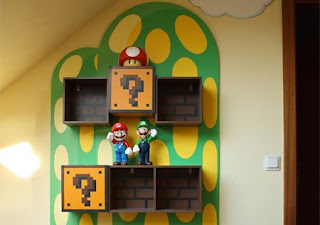Welcome
My Blog List
Pages
You can replace this text by going to "Layout" and then "Page Elements" section. Edit " About "
About Me
- VAISHUMAHA
- I have my values, and if you don't like them, well I've got some others. If you don't like something change it; if you can't change it, change the way you think about it.
Followers
Banner
Search This Blog
Love is patient, love is kind.
It does not envy, it does not boast,
it is not proud.
It is not rude, it is not self-seeking.
It is not easily angered,
it keeps no record of wrongs.
Love does not delight in evil,
but rejoices with the truth.
It always protects, always trusts,
always hopes, always perseveres.
Love never fails.
Free Template Blogger
collection template
Hot Deals
BERITA_wongANteng
SEO
Einstein once said, “Every child is born a genius.” But the reason why most people do not function at genius levels is because they are not aware of how creative and smart they really are.
I call it the “Schwarzenegger effect.” No one would look at a person such as Arnold Schwarzenegger and think how lucky he is to have been born with such tremendous muscles. Everyone knows that he, and people like him, have worked many thousands of hours to build up their bodies so they can compete and win in bodybuilding competitions. Your creative capabilities are just the same. They actually grow as they are used.
But you don’t need to spend thousands of hours to increase your creative-thinking abilities. By practicing a few simple exercises and applications, you can start your creative juices flowing, and you may even amaze yourself at the quality and quantity of good ideas that you come up with.
Let’s start off with the definition of creativity. In my estimation, after years of research on this subject, the very best definition of creativity is, simply, “improvement.” You don’t have to be a rocket scientist or an artist in order to be creative. All you have to do is develop the ability to improve your situation, wherever you are and whatever you are doing. All great fortunes were started with ideas for improving something in some way. In fact, an improvement needs to be only 10 percent new or different to launch you on the way to fame and riches.
It has been estimated that each year, driving to and from work, the average person has about four ideas for improvement, any one of which could make him or her a millionaire. The problem is not that you don’t have the ideas you need to accomplish anything you want but, rather, that you fail to act on those ideas. Most people dismiss their own ideas because they think that those ideas cannot be very valuable if they were the ones who thought of them.
Thomas Edison, arguably the most successful creative genius in human history, once said that creativity is 99 percent perspiration and only 1 percent inspiration. Extensive research on creativity tends to bear him out.
There are four generally accepted parts of the creative process: There is preparation, where much of the work is done. There is cerebration or rumination, where you turn the matter over to your subconscious mind. There is realization, where the idea or ideas come to you. And finally, there is application, where you work out the creative idea and turn it into something worthwhile. Of the four, preparation seems to be the most important, and it involves gathering the right data and asking the right questions.
Your success in life will be determined largely by the quantity of ideas that you generate. It seems that the quality of ideas is secondary to the quantity and that if you have enough ideas, one or more of them will turn out to be prizewinners.
You can begin building your creative muscles with focused questions. Some that you might think of are the following: What are we trying to do? How are we trying to do it? What are our assumptions? What if our assumptions are wrong?
All improvements begin with questioning the current, existing circumstances. If you are not making progress for any reason, stop and think, and begin asking yourself the hard questions that will stimulate your mind to consider other possibilities.
When they were doing the research to land a man on the moon, scientists were stumped for months and even years. They could not figure how to send a rocket to the moon with enough fuel to land on the moon, blast off, break the moon’s gravity and come back to earth.
The problem was that if the rocket had that much fuel to start with, it would be too heavy to take off from the earth in the first place. Finally, they began to question the assumption that the lunar rocket ship had to land on the moon. When they questioned that assumption, the scientists concluded that a main rocket could orbit around the moon while a smaller module dropped to the surface of the moon and then rejoined the orbiting rocket for the trip back to earth.
The mental logjam was broken, and the rest is history. Asking focused questions-hard questions that penetrate to the core of the matter-is the real art of the creative person.
The next step is to have the courage to deal with all the possible answers. Once you have come up with a possible solution, ask yourself, “What else could be the solution?” If your current method of operation were completely wrong, what would be your backup plan? What else would you or could you do? What if your current procedure or plan turned out to be a complete failure? Then what would you do? And what would you do after that? All of those questions will force you to think further and come up with better answers.
The second way to build your mental muscles is with intensely desired goals. The more you want something and the clearer you are about it, the more likely it is that you will generate ideas that will help you to move toward it. That is why the need for clearly written goals and plans for their accomplishment is repeated over and over.
Any intense emotion, such as desire, stimulates creativity and ideas to fulfill that desire. And the more you write down your goals and plans, and review them, the more likely it is that you will see all kinds of possibilities for achieving those goals. The third generator of creative-thinking muscles is pressing problems. A good question to ask is “What are the three biggest problems that I am facing in my life today?” Write the answer to this question quickly, in less than 30 seconds. When you write the answer to a question in less than 30 seconds, your subconscious mind will sort out all extraneous answers and give you the three most important ones.
When you have your three most pressing problems, ask yourself, “What is the worst possible thing that can happen as a result of each of these problems?” Then ask yourself, “What are all the things that I can do, right now, to alleviate each problem?” If you have a problem that is worrying you for any reason, think about what you could do immediately to begin alleviating that concern.
This is a prime use of your creative powers. So a key to success in creative thinking is clarity. Take the time to think through, discuss and ask questions that help you to clarify exactly what you are trying to accomplish and exactly what problems you are facing at the present moment. Just as fuzzy thinking leads to fuzzy answers, clear thinking leads to clear answers.
A second key is concentration. Put everything else aside, and concentrate single-mindedly on focusing all your mental powers on solving one single problem, overcoming one particular obstacle or achieving one important goal. The ability to concentrate on a single subject without diversion or distraction is a hallmark of the superior thinker. A third key is an open mind. The average person tends to be rigid and fixed in his thinking about getting from where he is to where he wants to go.
The creative thinker, however, tends to remain very flexible and open to a variety of ways of approaching the problem. The average person has a tendency to leap to conclusions and determine that there is only one way to achieve a particular goal. The superior thinker, on the other hand, tends to be more patient and willing to consider a variety of options before moving toward a conclusion. There is one other creative concept that can be very helpful when it is used in combination with what we have already discussed, and it is called the “limiting step.”
Between you and any goal that you want to achieve or any problem that you want to solve, there is almost invariably a limiting step or a “choke point” that determines the speed with which you move from where you are to your destination. This limiting step may be another person, a particular obstacle, a specific difficulty, or even a lack of some information or skill.
Invariably, there is a particular factor that determines how fast you get there. Your job is to think about it and decide what it is, and then go to work to remove it. For example, if you are in sales, your limiting step may be the number of prospects you have.
If this is the case, then your job is to do everything possible and to use all your creative capacities to increase your number of prospects until it is no longer a problem. Then, of course, there will be another limiting step, and your job is to go to work on that. If you have a business, your limiting step may be the number of qualified people who are responding to your advertising.
If this is the choke point that hinders the amount you sell and the speed at which your company grows, it behooves you to concentrate your mental powers on relieving that bottleneck. You must concentrate the very best thinking abilities of yourself and others on increasing the number of qualified prospects that your advertising and promotional efforts attract.
In relationships and misunderstandings between people, there is almost invariably a
sticking point or subject area that needs to be resolved in order to bring about harmony again. Your job is, first, to identify this limiting step and then, second, to find a way to alleviate the difficulty to the satisfaction of everyone involved.
You are a genius, and you were born with the potential for exceptional creativity. But creative abilities are latent. They are like muscles that grow with use. You can increase your creative powers by using them, over and over, in every situation, deliberately and specifically, until creativity and a creative response to life is as natural to you as breathing in and out is.
There are very few things that you can do that can have a more powerful positive impact on your entire life than becoming excellent in creative thinking. And you can if you think you can.
Free Template Blogger
collection template
Hot Deals
BERITA_wongANteng
SEO
Free Template Blogger collection template Hot Deals BERITA_wongANteng SEO
RESUME
EDUCATION /Qualification:
1950: Stood first in BA (Hons), Economics, Punjab University , Chandigarh ,
1952; Stood first in MA (Economics), Punjab University , Chandigarh ,
1954; Wright's Prize for distinguished performance at St John's College, Cambridge,
1955 and 1957; Wrenbury scholar, University of Cambridge ,
1957; DPhil ( Oxford ), DLitt (Honoris Causa); PhD thesis on India 's export competitiveness
OCCUPATION /Teaching Experience :
Professor (Senior lecturer, Economics, 1957-59;
Reader, Economics, 1959-63;
Professor, Economics, Punjab University , Chandigarh , 1963-65;
Professor,International Trade, Delhi School of Economics,University of Delhi,1969-71 ;
Honorary professor, Jawaharlal Nehru University ,New Delhi,1976 and Delhi School of Economics, University of Delhi ,1996 and Civil Servant
Working Experience/ POSITIONS :
1971-72: Economic advisor, ministry of foreign trade
1972-76: Chief economic advisor, ministry of finance
1976-80: Director, Reserve Bank of India ;
Director, Industrial Development Bank of India;
Alternate governor for India, Board of governors, Asian Development Bank;
Alternate governor for India, Board of governors, IBRD
November 1976 - April 1980: Secretary, ministry of finance (Department of economic affairs);
Member, finance, Atomic Energy Commission; Member,finance, Space Commission
April 1980 - September 15, 1982 : Member-secretary, Planning Commission
1980-83: Chairman , India Committee of the Indo-Japan joint study committee
September 16, 1982 - January 14, 1985 : Governor, Reserve Bank of India ..
1982-85: Alternate Governor for India , Board of governors, International Monetary Fund
1983-84: Member, economic advisory council to the Prime Minister
1985: President, Indian Economic Association
January 15, 1985 - July 31, 1987 : Deputy Chairman, Planning Commission
August 1, 1987 - November 10, 19! 90: Secretary-general and commissioner,
south commission, Geneva
December 10, 1990 - March 14, 1991 : Advisor to the Prime Minister on economic affairs
March 15, 1991 - June 20, 1991 : Chairman, UGC
June 21, 1991 - May 15, 1996 : Union finance minister
October 1991: Elected to Rajya Sabha from Assam on Congress ticket
June 1995: Re-elected to Rajya Sabha
1996 onwards: Member, Consultative Committee for the ministry of finance
August 1, 1996 - December 4, 1997: Chairman, Parliamentary standing committee on commerce
March 21, 1998 onwards: Leader of the Opposition, Rajya Sabha
June 5, 1998 onwards: Member, committee on finance
August 13, 1998 onwards: Member, committee on rules
Aug 1998-2001: Member, committee of privileges 2000 onwards: Member, executive committee, Indian parliamentary group
June 2001: Re-elected to Rajya Sabha
Aug 2001 onwards: Member, general purposes committee
BOOKS:
India 's Export Trends and Prospects for Self-Sustained Growth -
Clarendon Press, Oxford University , 1964; also published a large number of articles in various economic journals.
OTHER ACCOMPLISHMENTS:
Adam Smith Prize, University of Cambridge , 1956
Padma Vibhushan, 1987
Euro money Award, Finance Minister of the Year, 1993;
Asia money Award, Finance Minister of the Year for Asia, 1993 and 1994
INTERNATIONAL ASSIGNMENTS:
1966: Economic Affairs Officer
1966-69: Chief, financing for trade section, UNCTAD
1972-74: Deputy for India in IMF Committee of Twenty on
International Monetary Reform
1977-79: Indian delegation to Aid-India Consortium Meetings
1980-82: Indo-Soviet joint planning group meeting
1982: Indo-Soviet monitoring group meeting
1993: Commonwealth Heads of Government Meeting Cyprus 1993: Human Rights World Conference, Vienna
RECREATION :
Gymkhana Club, New Delhi; Life Member, India International Centre,
New Delhi
PERSONAL DETAIL:
Name: Dr Manmohan Singh
DOB: September 26, 1932
Place of Birth: Gah ( West Punjab )
Father: S. Gurmukh Singh
Mother: Mrs Amrit Kaur
Married on: September 14, 1958
Wife: Mrs Gursharan Kaur
Children: Three daughters
Indian Prime Minister seems to be the most qualified PM in the world.
Free Template Blogger
collection template
Hot Deals
BERITA_wongANteng
SEO

Free Template Blogger collection template Hot Deals BERITA_wongANteng SEO






































































